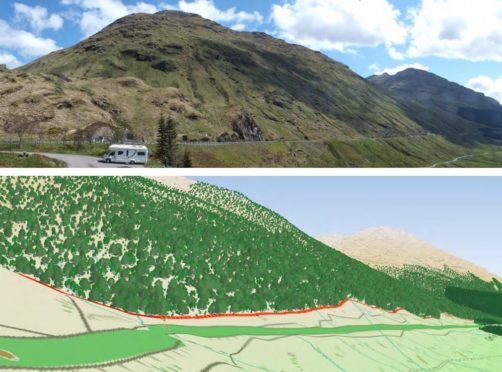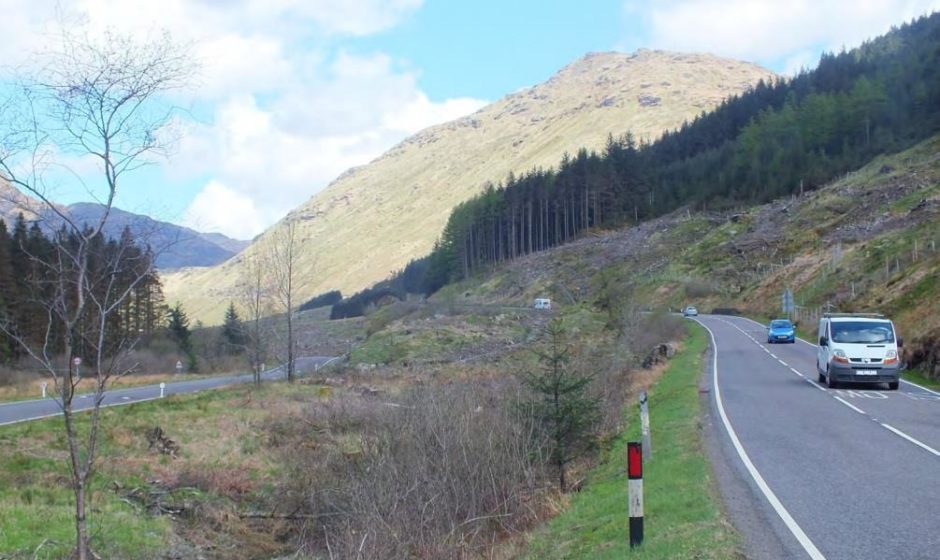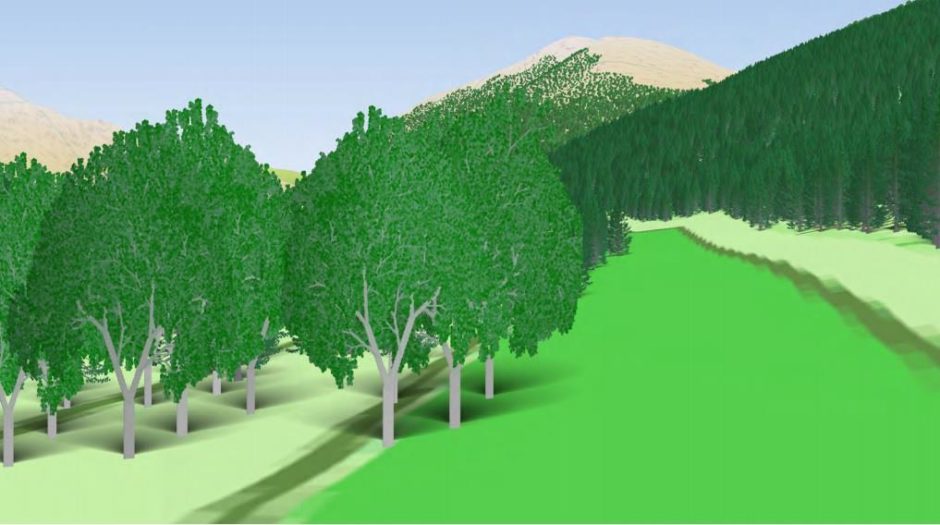Preparation work is to begin this month on a massive tree planting project aimed at stabilising a hillside around a notorious road regularly closed by landslips.
The A83 Rest and Be Thankful Tarbert to Campbelltown route is routinely shut after being hit by numerous landslides.
Forestry and Land Scotland is working with Transport Scotland in a bid to prevent these continually happening in the future.
They are to start erecting deer fences that will protect the saplings of a range of tree species that are to be planted in to help maximise slope stability.
Tree planting is intended to start next autumn.
The new woodland will take some time to establish but, from the moment of planting, the tree roots will begin to bind the slope – an effect that will cumulatively increase, year on year.
James Hand, FLS operations forester, said: “The deer fence is a crucial first stage because protecting the saplings and other vegetation from deer and other mammal grazing is crucial to ensuring rapid establishment of the new woodland.
“The mix of species selected for the woodland will help it withstand events associated with predicted climate change, particularly those associated with sudden heavy rain fall incidents.
“The trees will complement the ‘hard’ engineering that has been done at the site to help stabilize the slope and protect the road infrastructure. Working in tandem, both approaches will help to mitigate the challenges presented by this notoriously unstable slope.”
The bulk of the fencing work will take place in the spring and summer of 2021.
George Fiddes, Transport Scotland’s special projects manager, said: “Commencement of these vital deer fencing works marks an important milestone in the hillside planting strategy.
“We look forward to continuing to work with Forestry and Land Scotland on this key project which forms part of the Scottish Government’s wider landslide mitigation works at the A83 Rest and Be Thankful.”
As well as protecting the trees, the fence will have ecological benefits across a wider area by reducing grazing pressure and will help develop a network of native woodland at a landscape scale.
Careful consideration has to be given to selecting the correct species of trees and shrubs that would best be able to cope with the extreme conditions on such an exposed site.
James added: “Anything planted at this site should not only be able to provide the rooting structures that will help slope stabilisation but should also be resilient enough to survive in this environment.
“Sourcing Scottish plants from local areas, as close as possible to the site, means we’re benefitting from the plant species that are adapted for the current local environment and that are most likely to be resilient to a changing climate into the future.”
The combination of species will include downy birch, aspen, oak, blackthorn, hawthorn, hazel, juniper and Scot pine.
As well as enhancing the landscape and contributing to the scenic value of the National Park, the mix of species will be good for biodiversity, for example by increasing the amount of prey species that sustain Golden Eagles, and providing cover for prey species and Black Grouse.
The project overall will also protect water quality and riparian habitats, especially those associated with spawning salmonids.
Natural regeneration of native species will also be encouraged and there is scope for further planting adjacent to the core project area.
Information panels will be installed at points where new gates will be erected across traditional access routes, to help inform walkers why the fence has appeared.
Earlier this year Bear Scotland announced a temporary bund costing £950,000 is to be constructed next to the Old Military Road within weeks to ease woes at the Rest and Be Thankful.


